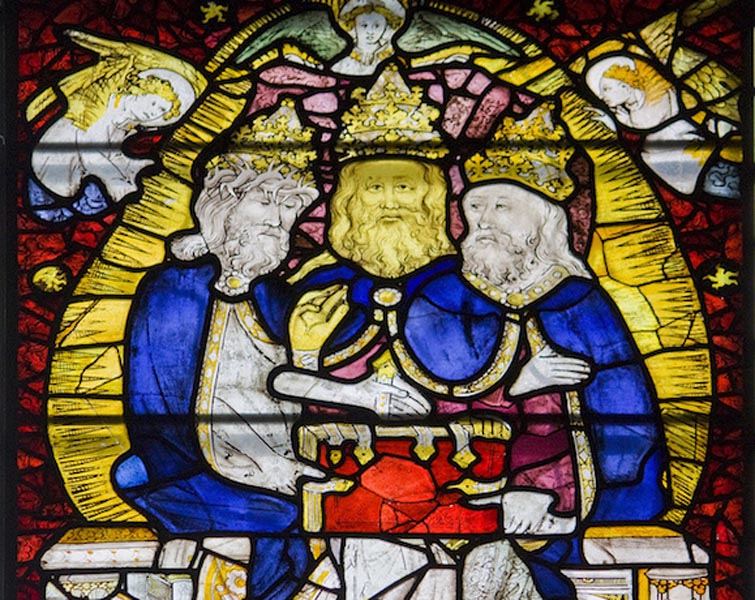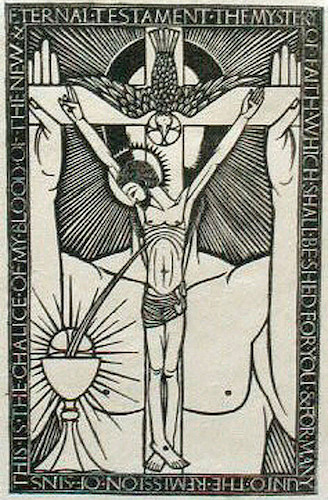
Consecrated Life and the Trinity
 For a start, everything is Trinitarian. God is a Holy Trinity in Unity, and all creation is made through the Trinity (cf. Jn 1:3; Col 1:16). It should be no surprise, then, that the consecrated life is deeply Trinitarian. This was put succinctly by St John Paul II: ‘The Consecrated Life, deeply rooted in the example and teaching of Christ the Lord, is a gift of God the Father to his Church through the Holy Spirit’ (Vita Consecrata, 1).
For a start, everything is Trinitarian. God is a Holy Trinity in Unity, and all creation is made through the Trinity (cf. Jn 1:3; Col 1:16). It should be no surprise, then, that the consecrated life is deeply Trinitarian. This was put succinctly by St John Paul II: ‘The Consecrated Life, deeply rooted in the example and teaching of Christ the Lord, is a gift of God the Father to his Church through the Holy Spirit’ (Vita Consecrata, 1).
The doctrine of the Trinity is about love: the love of the Father for the Son in the Holy Spirit. As the source and pattern of all authentic love, the life of the Trinity is freely turned outwards in creation. The consecrated life is likewise oriented towards others, even though it is also known for its deep interior prayerfulness. Chiefly it is oriented towards God, to whom religious vows are primarily sworn, but also towards brothers or sisters in community, and towards those encountered in service to the wider world.
We should therefore expect to find a particular Trinitarian ‘character’, or stamp, on consecrated life. In fact, we may appropriate particular roles to the Divine Persons (Father, Son, and Spirit), notwithstanding the fact that the whole Trinity always works inseparably together.
The Father loves and calls us from before we were born. The Father takes the initiative: he is the Creator who made us, and he calls us to be holy by sharing in his holiness: ‘Be holy, for I am holy’ (1 Pt 1:16; quoting Lv 11:44-5). Jesus himself takes up this theme when he invites disciples to follow him more closely: ‘Be perfect, therefore, as your Father in heaven is perfect’ (Mt 5:48). These words are addressed to all people, but consecrated people take them to heart in a particular way: how can one give up all transient attractions in this life in order to cleave as perfectly as possible to the love of God the Father (cf. 1 Jn 2:17)?
If (or rather when!) we struggle with that call to holiness, we are reassured that God the Son shows us the way. While we were dead in sin, the eternal Son of the Father came to restore us to our true life in God. The pre-existent Son took flesh as Jesus Christ in order not simply to show us the way home, but to be that way. For he is the Way, the Truth and the Life (Jn 14:6). So we become holy and perfect by following and imitating Christ. For the consecrated person, that entails a renunciation of certain earthly goods (marriage and family life, private possessions, and an autonomous career), in order to follow the Christ who was celibate, poor and completely obedient to the will of the Father. These evangelical counsels are rightly called ‘a gift of the Holy Trinity’ (VC 20).
 In taking vows, the consecrated person is doing what Christ did when he said to the Father, ‘Not my will, but yours be done’ (e.g. Lk 22:42). Christ did this just at the point he was handing himself over to his passion and death, and the result was the life of the resurrection. In the same way, the consecrated person hands over their future – ‘until death’, as in the Dominican formula of Solemn Profession – precisely in order to receive an abundance of God’s life, in this world as well as in the world to come (cf. Lk 18:30). In the meantime, the consecrated person follows Jesus ‘wherever he goes’ (Rv 14:4). For many active religious orders this means going to the peripheries, as Pope Francis reminds us, to minister whole-heartedly to the excluded, the poor, the immigrant, the sick, the imprisoned, the disabled, the elderly and isolated.
In taking vows, the consecrated person is doing what Christ did when he said to the Father, ‘Not my will, but yours be done’ (e.g. Lk 22:42). Christ did this just at the point he was handing himself over to his passion and death, and the result was the life of the resurrection. In the same way, the consecrated person hands over their future – ‘until death’, as in the Dominican formula of Solemn Profession – precisely in order to receive an abundance of God’s life, in this world as well as in the world to come (cf. Lk 18:30). In the meantime, the consecrated person follows Jesus ‘wherever he goes’ (Rv 14:4). For many active religious orders this means going to the peripheries, as Pope Francis reminds us, to minister whole-heartedly to the excluded, the poor, the immigrant, the sick, the imprisoned, the disabled, the elderly and isolated.
To help us follow Christ, the Holy Spirit purifies and sanctifies our hearts on an individual level. But all consecrated life also has a community dimension. Even for the most isolated hermits or monastics, there are bonds of prayer and love, in the Spirit, that go much deeper than many everyday interactions. Moreover, for some consecrated persons, the life of the Spirit is manifest particularly in their ‘cenobitic’ or community dimension, through their everyday love for (and patience with!) their brothers and sisters. The Spirit’s role was obvious in the earliest Christian community in Jerusalem, a model of fraternity (cf. Acts 2:42-47; 4:32-35; VC 41). And the power of Pentecost continues today, inflaming consecrated persons with the Spirit’s gifts, so that fraternal living does not build a navel-gazing ghetto but overflows into service to the wider world.
Finally, if a consecrated person ever risks forgetting the all-encompassing role of the Holy Trinity in their life, they could try to count the number of Trinitarian prayers they say every day in the Divine Office! Indeed, every psalm and canticle ends with the Trinitarian doxology, summarising the goal of Christian life and the consecrated life in particular:
Glory be to the Father, and to the Son, and to the Holy Spirit,
As it was in the beginning, is now, and ever shall be, world without end. Amen.
Images: The Trinity depicted in medieval stained glass, York Minster; Eric Gill, The Trinity with Chalice (1914).


